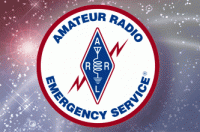|
Welcome,
Guest
|
TOPIC:
HTs & the Rubber Duck Antenna 10 years 7 months ago #290
|
HT Antennas
It shouldn’t come as a surprise to anyone that when limited to "barefoot" operation with a "rubber duck" on simplex, HTs are not adequate as a primary rig for emergency communications. The National Institute of Standards and Technology (NIST) ran some tests (back when they were still the NBS) on Public Safety high band and amateur 2-meter antennas. They found that a "rubber duck" has -5db gain compared to a quarter wave antenna held at shoulder height. - In terms of effective radiated power (ERP), a 5w HT with rubber duck antenna, held at shoulder height would actually radiate 1.5 watts - Placing the HT on your belt attenuates the signal another 20db, reducing ERP to only 15 milliwatts! - UHF results weren’t found to be much better. <PAUSE for the Repeater to reset > In marginal locations, a telescoping half-wave is a good performer. A half wave used without a ground plane has the same unity gain as a ¼ wave when used with a ground plane. Adding an effective ground plane or counterpoise to a half- wave produces roughly 2 db of gain. A telescoping half wave can also be attached to a coax jumper and pulled into a tree, dangled out a window, attached to a window pane with suction cups or used with a window clip door mount. <PAUSE for the Repeater to reset > Telescoping antennas work best when operating stationary or in the open, avoiding side impacts or rough handling. Extend and retract the radiating elements very carefully. If you note any wobbling or looseness, replace the telescoping radiator, if possible, or replace the entire antenna. Keep a close watch on your HT’s connector also. It can become loose after extended use of a telescoping antenna. <PAUSE for the Repeater to reset > Flexible antennas are safer when working in close quarters around people and are more durable when walking through dense vegetation during search and rescue operations. They are a good choice for dual-band transceivers, but are usually optimized for one band and merely "acceptable" on the other. Most approximate a ¼ wave on 2 meters and a 5/8 wave on 70 cm. How efficient a particular antenna is can be determined only by controlled testing. <PAUSE for the Repeater to reset > If you want to buy one emergency HT antenna, without risk or experimentation, the telescoping half-wave, flexible 5/8 wave or quarter wave mag mount all offer the best "bang for the buck" in my opinion. A telescoping half-wave boosts practical simplex range of a 5 watt, 2-meter HT from several miles with a rubber duck to many miles over suburban terrain. Adding a tiger tail further extends readable simplex range under the same conditions. <PAUSE for the Repeater to reset > Whatever antenna you choose, try to find one that is rated for at least 25W so that it can also serve as an emergency antenna for the HT with a power amplifier at medium power. A ¼ wave mag mount connected to a power amplifier works best on a car, but a suitable improvised ground plane can usually be found around the home or office. A metal filing cabinet, rain gutter, refrigerator, balcony railing or other large metal object may work just as well. If all else fails, place aluminum foil over a large piece of cardboard. <PAUSE for the Repeater to reset > A good possibility for Fixed position Emergency Operations is the so-called Roll Up J-pole . It’s made from 300 Ohm TV Twin-lead and should give you several dB of gain over a rubber duck. I've used mine for the past year and one-half as a base antenna and have been quite happy with it. It is well worth the money spent (~ $20). Let me reset and I'll give the dimensions. <PAUSE for the Repeater to reset > Another antenna that is a good performer for fixed operations is the " J-Pole ". Attach it to the top of a 10 foot section of PVC pipe and mount this to a camera tripod. Attach weights to the legs for stability. This makes a very nice fixed station antenna with good gain. <PAUSE for the Repeater to reset > Source: www.clackamasares.org/index.php/j-pole-a...14-members/resources |
|
Please Log in or Create an account to join the conversation.
Last edit: by WA1SFH.
|
Time to create page: 0.122 seconds
